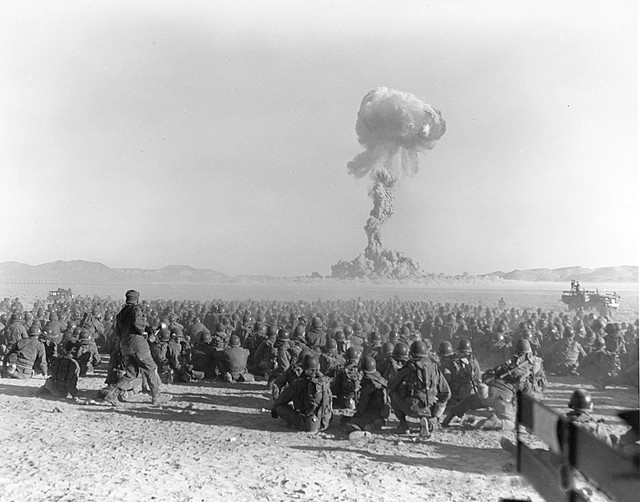Scientists conducted first atomic bomb test in 1951, last in ’92
The former Nevada Test Site, now known as the Nevada National Security Site, 65 miles northwest of Las Vegas, has the distinction of being the most nuclear-bombed place on the planet.
From Jan. 27, 1951, when a B-50 Superfortress dropped the first atomic bomb, code-named Able, over the test site, until the last below-ground device, Divider, exploded on Sept. 23, 1992, there were 928 nuclear tests involving 1,021 detonations at the sprawling proving ground.
Some tests involved multiple devices.
Of the total, there were 828 underground nuclear tests, including 24 that were conducted jointly by scientists from the United States and the United Kingdom.
The other 100 were atmospheric nuclear blasts, according to the Department of Energy’s National Nuclear Security Administration. Those were conducted before President John F. Kennedy signed the Limited Test Ban Treaty, on Oct. 7, 1963, prohibiting above-ground nuclear tests.
The largest detonation at the site was Boxcar, on April 26, 1968, in Pahute Mesa. It measured 1.3 megatons, equivalent to detonating 1.3 million tons of TNT.
A 5-megaton bomb was detonated in Alaska before the United States and the Soviet Union agreed to a 150-kiloton cap on all nuclear tests in 1974.
Though subsidence craters from below-ground tests — hundreds of which still pockmark the test site — were not as thrilling as fireballs and mushroom clouds, the data generated about the behavior of radioactive materials and force of the explosions gave scientists much to ponder.
They learned how to fine-tune weapons, making them more adaptable for accurate delivery to targets.
After the last nuclear test at the site in 1992, President George H.W. Bush launched a temporary moratorium on full-scale nuclear tests that was extended indefinitely by President Bill Clinton and has been observed ever since.
In 1997, scientists conducted the first subcritical nuclear experiment at the test site, using high-explosives to slam tiny amounts of nuclear materials to see how they respond.
The high-tech detonations fall short of the chain-reactions that define nuclear weapons.
Scientists now use modern physics equipment and high-speed computers to simulate nuclear tests to see how warheads age.
Today the test site still plays a vital role in countering terrorism, training first responders and providing scientists with the tools they need to ensure the nation’s nuclear weapons remain safe and reliable.

Nevada Test Site 60th Anniversary (2011)
Videos, slideshows, timeline, resources

















